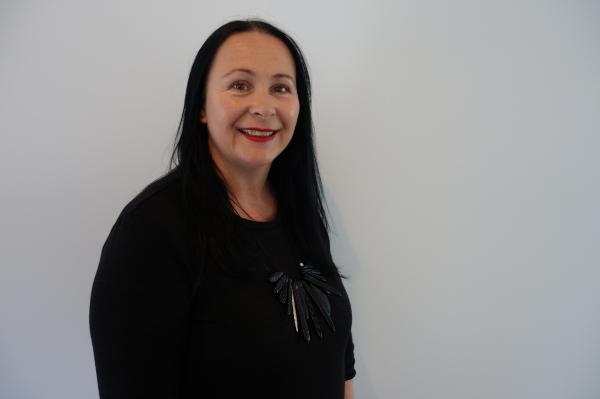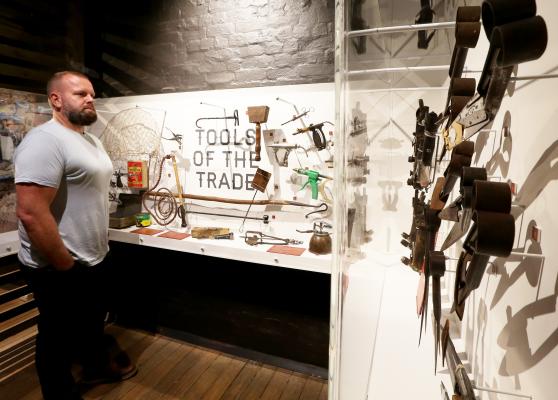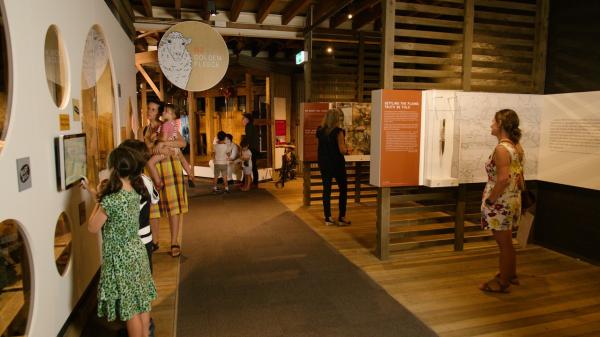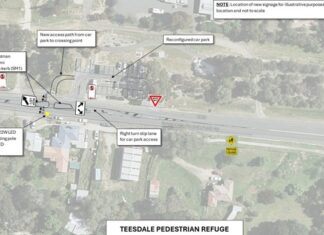“I’ve been an artist my whole life,” says Wadawurrung woman and Ballarat painter Deanne Gilson.
Gilson’s love of painting ultimately stemmed from an eye problem when she was young, which caused her to avoid ball sports.
“I had major eye surgery when I was five,” she said ahead of a new permanent Geelong exhibition featuring her work, which opened on Wednesday night.
“I used to get into kinder and they couldn’t get me outside – I was always painting away in there.”
But her passion for the art of her forebears took off at age seven, when her family found a cache of old Indigenous stone tools.
Her family had just moved from Melbourne to Gordon, and were building a house when they discovered the artifacts onsite, she explained.
“That really sparked my interest,” she said.
“My mum said her ancestors had been waiting for her to come back to country.”
For 35 years Gilson has dived into the ancestral knowledge and traditional markings of her culture in her paintings, drawings and sculptures.
“My practice aims to highlight and bring back traditional women’s symbols and ceremonial practices that reference the lived experience of my ancestors,” she said.
“By reviving traditional marks found on artifacts and women’s business, I am forming links with past ancestral knowledge so that it is not lost and continues for future generations.
“My art practice relies heavily on the use of symbols and form as a metaphor for the body.”
She uses ochre in much of her painting and has also worked on large-scale public art, digital collage photography and fabric design.
“For me it’s about sustainability, clean living, taking care of country and not using as many chemicals,” she said.
Her 2016 piece Yaluk, Beek, Murrup, meaning Water, Country, Spirit, features in the National Wool Museum’s new permanent exhibition On the Land.
The shield depicts the connection to country through the water that flows through local rivers and creeks to that in our bodies, according to Gilson.
“It’s a huge honour [to be part of this exhibition] because in the past it was really like we didn’t exist,” she said.
“What it says is Victorian Aboriginal people are still here. We were not completely wiped out like in Tasmania.”
On the Land: Our Story Retold is the first major exhibition on Australian wool since a 1994 exhibition at Sydney’s Living Museum, according to the National Wool Museum.
The exhibition replaces Wool Harvest – part of the National Wool Museum’s permanent collection since it was officially opened by Queen Elizabeth II in 1988.
Visitors to ‘On the Land’ will experience parts of the Museum’s extensive collection, charting tools of the trade from the early 19th Century up until the present day.
The exhibition features an 1820 cloth fragment made from John Macarthur’s first wool clip – on public display for the first time.
It also includes art and photos from Geelong locals Mary-Jane Walker, Vicki Hallet, Nicole Marie, Pete James and Andrew Chapman, along with a painting from Richard Weatherly.
“Even our taxidermy sheep have had a makeover courtesy of Melbourne illustrator Ashley Ronning,” National Wool Museum director Padraic Fisher said.
“Visitors will feel a connection to the land, the lives and the achievements of generations of those who live on these lands, wool growers, textile manufacturers, craftspeople, artists and innovators.”










